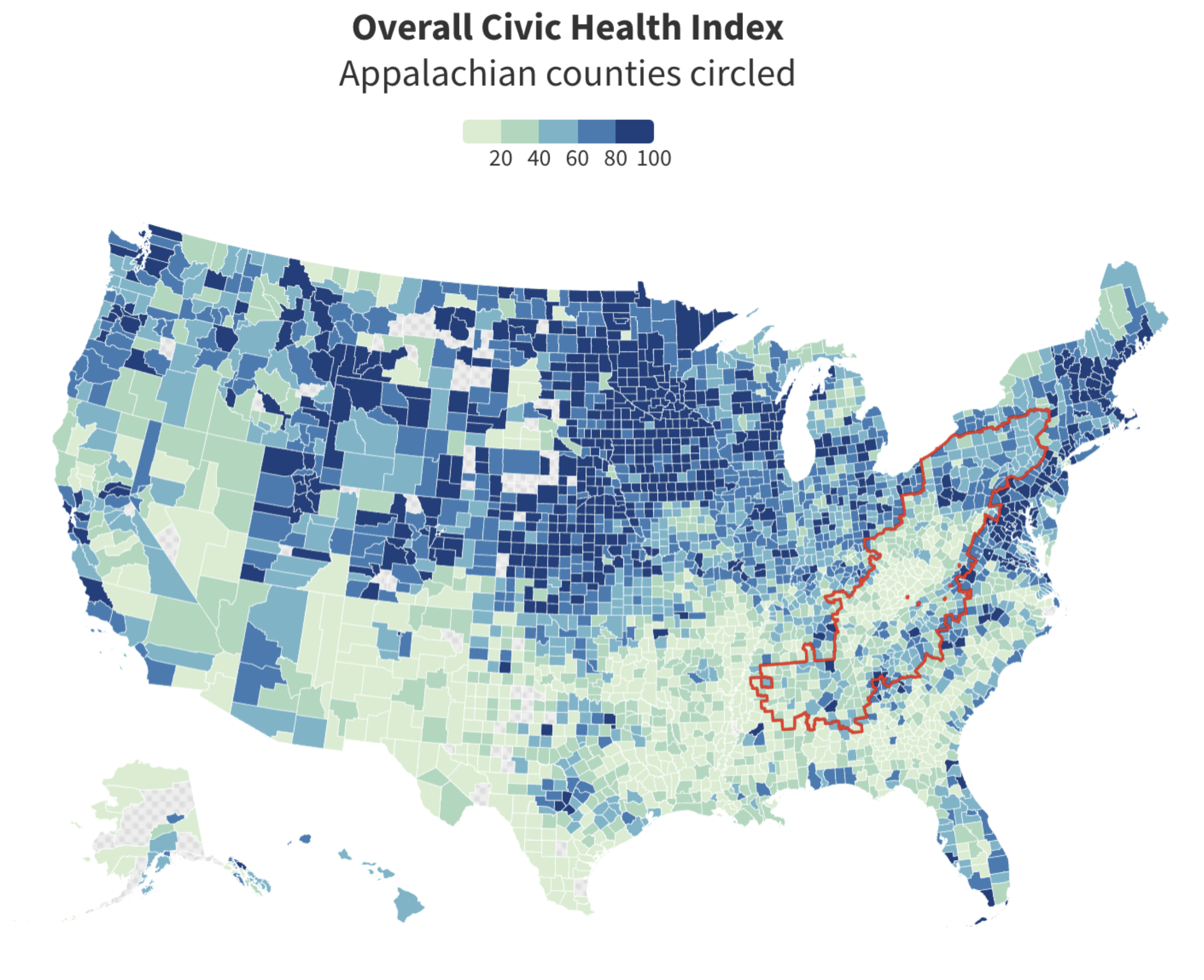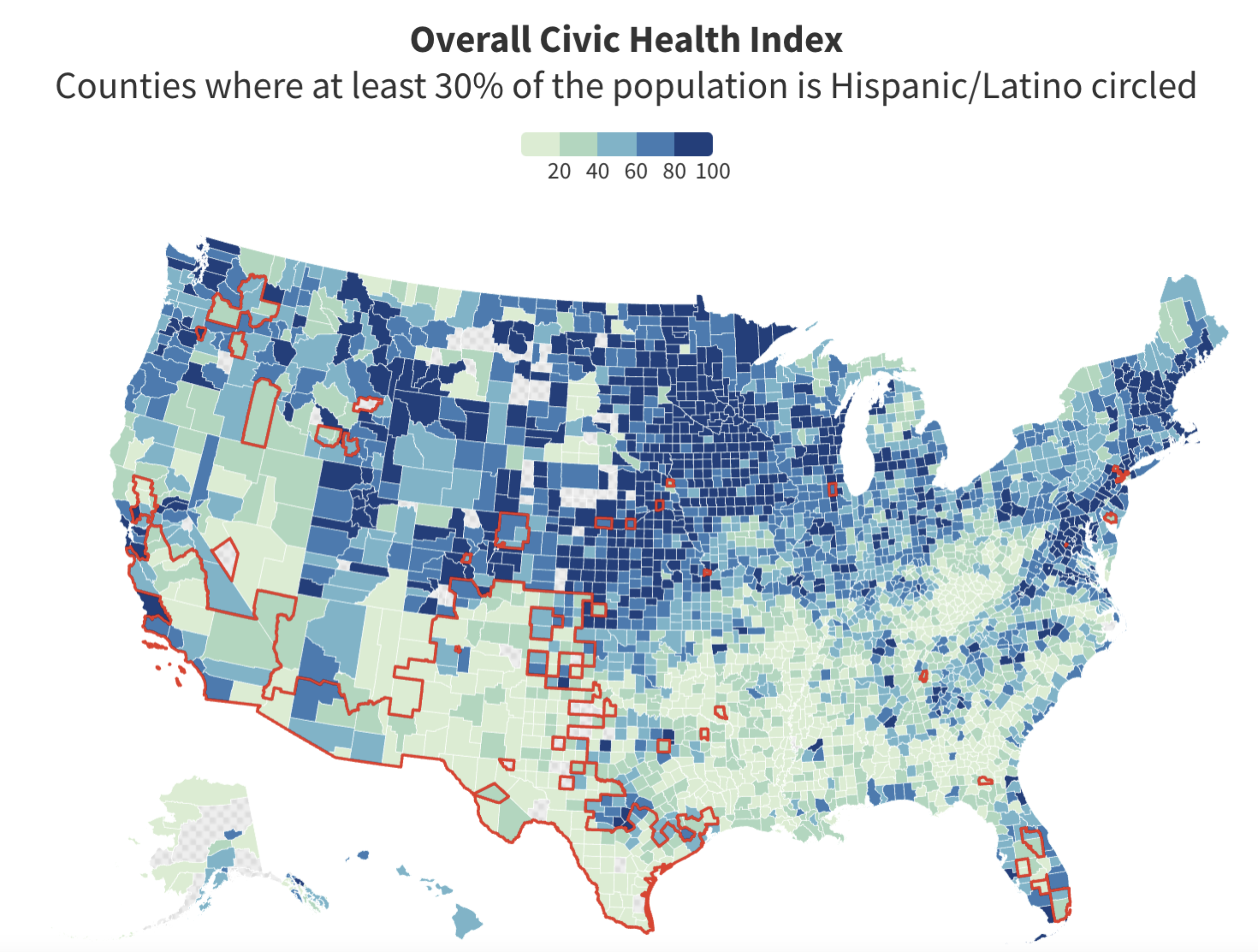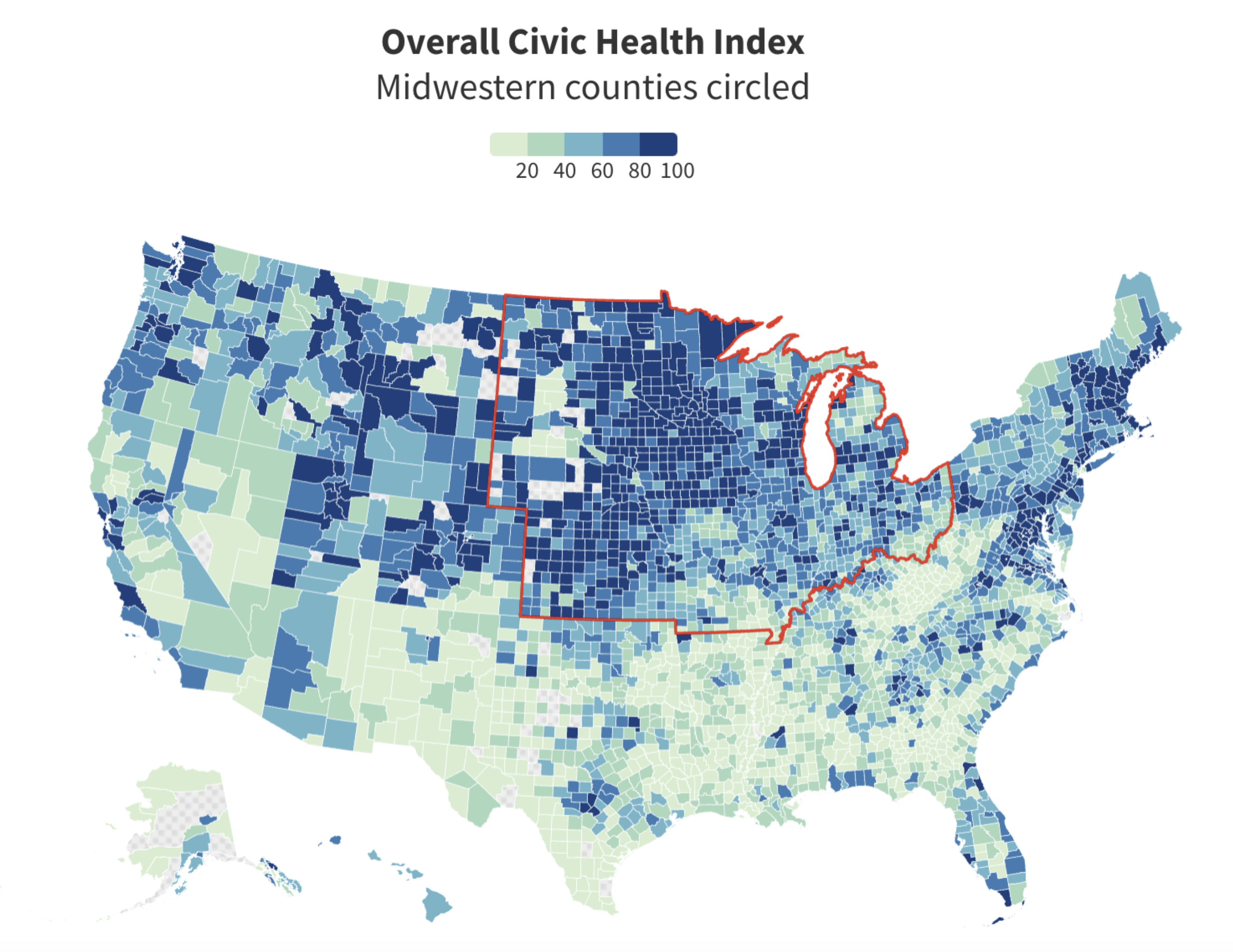Insights
National and Regional Findings
Given the diversity of communities, opportunities and challenges present across the United States, the main purpose of the Civic Information Index is to allow localized assessments of key factors that drive civic health. By showing data at the county level, the Index supports civic information entrepreneurs and their partners across the civic health ecosystem with insights on where a specific community may be struggling, and where its opportunities are.
At the same time, the Civic Information Index reveals significant regional disparities in civic health across the United States. Lower Index scores often correlate with regions historically affected by racial and economic discrimination.

Appalachia
The Index reveals the profound civic health disparities in Appalachia, a region historically impacted by economic hardship and geographic isolation. Despite its rich cultural heritage, the area struggles with lower civic participation and access to critical resources, underscoring the need for targeted interventions. Economic stability and access to information remain significant challenges for these communities.
By including structural determinants such as neighborhood poverty, youth disconnected from school or work and life expectancy, the Index is built to capture such dynamics and show where outcomes are inequitable.

Black Communities
Black communities, particularly in the South, exhibit stark disparities in civic health due to centuries of systemic racism and disenfranchisement. The Index highlights these regions, showing how historical marginalization continues to affect civic engagement and access to essential services. Voting rights and civic participation remain critical issues, as these communities face ongoing barriers to full civic involvement.

Hispanic/Latino Communities
Hispanic and Latino communities, especially in the Southwest, face significant challenges in civic health, often exacerbated by language barriers and immigration status. The Index maps reveal these communities’ struggles with lower access to information and civic participation, calling for inclusive and culturally competent solutions. Factors such as the percentage of families who speak languages other than English at home and access to broadband are crucial indicators in understanding these disparities.

Native American Communities
Native American communities, particularly those on reservations, display some of the lowest civic health scores in the Index. Historical and ongoing marginalization, along with geographic isolation, contribute to these disparities, highlighting a critical area for civic and policy interventions.

Midwestern Communities
Conversely, Midwestern communities generally fare well in the Index, reflecting strong civic health indicators in many areas. While some rural regions still struggle with declining populations and access to services, many Midwestern counties show higher levels of community engagement and economic stability. This variability highlights the importance of localized approaches to maintaining and improving civic health.
“I think this is a great opportunity to bridge silos. There are so many organizations and agencies beyond journalism that have been thinking about and doing this work. This index can help highlight and bring together these efforts.”
 Kali-Ahset Amen, Executive Director, Center for Journalism & Democracy, Howard University
Kali-Ahset Amen, Executive Director, Center for Journalism & Democracy, Howard University
“This work is huge. The Index can help us understand the broader context and show the connections between different data points. It’s a tool for investigating, inspiring coverage, and understanding the unique needs of different communities. And it serves as a common language and a starting point for collaborative efforts to improve civic health.”
 Andrea Wenzel, Associate Professor of Journalism, Temple University
Andrea Wenzel, Associate Professor of Journalism, Temple University
These are the 12 most important insights we gleaned from the Civic Information Index project so far:
Recommendations
The creation of the Civic Information Index marks a pivotal step toward strengthening civic health across the United States. By building on existing knowledge and fostering collaboration among funders, journalism support organizations, media outlets, researchers and community stakeholders, this Index is positioned to be more than just a tool — it is a catalyst for change.
“This work is huge. The Index can help us understand the broader context and show the connections between different data points. It’s a tool for investigating, inspiring coverage, and understanding the unique needs of different communities. And it serves as a common language and a starting point for collaborative efforts to improve civic health.”
 Matt Leighninger, Director, National Civic League
Matt Leighninger, Director, National Civic League
